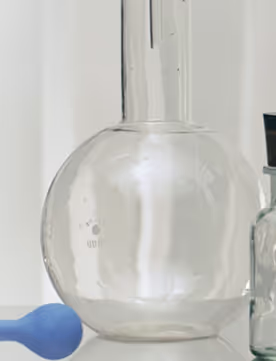The gut is home to many types of bacteria that belong there and play important roles in keeping your body running optimally. But when too many of the wrong types of bacteria start to populate the small intestine it can cause problems, including persistent and uncomfortable bloating. Small intestinal bacterial overgrowth (SIBO) occurs when, for one reason or another, certain strains of bacteria go unchecked and are allowed to overpopulate the small intestine. Here, we’ll dig into some of the scenarios that may lead to SIBO, how it is diagnosed, and what you can do to get rid of SIBO bloat for good.
What Is SIBO?
Food leaving the stomach enters the small intestine, where digestion continues as food is broken down and nutrients absorbed. Digestive juices and muscular contractions do much of the work of digestion, but bacteria living in the small intestine also play a large role.
When conditions in the small intestine are less than optimal, the population of bacteria can become imbalanced. There are a number of factors that may cause the wrong kind of bacteria to overgrow within the small intestine. When this occurs, it can cause symptoms such as abdominal pain, gas, diarrhea, nausea, constipation, fatigue, and serious bloating. (Source)
Why Does SIBO Cause Bloating?
One of the primary jobs of bacteria in the small intestine is to help break down carbohydrates into fatty acids. This process normally produces a certain amount of gas as a fermentation byproduct. But when there is an overgrowth of bacteria in the small intestine, excess gas is produced, leading to uncomfortable bloating. (Source)

Major Causes of SIBO
Determining the cause of SIBO can be tricky, as there are a variety of scenarios that can promote overgrowth of bacteria in the small intestine. When all the parts of the gastrointestinal system are working together optimally, growth of beneficial bacteria is supported and harmful bacteria is kept in check. Let’s take a look at some of the common causes of SIBO. (Source)
Motility Issues
Motility refers to the muscular contractions of the digestive tract, known as peristalsis, that move food along. Your nerves and muscles need to be well-coordinated and consistently do their jobs in order to keep food and waste moving. If peristalsis is impaired or overall motility is otherwise reduced, food is not able to pass through the intestines at the normal rate. Impaired peristalsis can cause a buildup of bacteria in the small intestine. (Source)
Anatomic (Structural) Irregularities
Sometimes food can’t pass through the digestive tract efficiently because of structural irregularities. One example of a structural irregularity that impacts digestion is called a bowel loop, formed when scar tissue from surgery, trauma, or inflammatory disease ties off a loop of intestine. In these cases, surgery may be necessary to create a clearer path for food to pass through. (Source)
Additionally, some people with SIBO discover they have an issue with the ileocecal valve that connects the small intestine to the large intestine, or colon. If it is not closing properly, bacteria that are supposed to live in the colon can migrate into the small intestine. (Source)
Hypochlorhydria
Hypochlorhydria refers to low stomach acid. Hydrochloric acid in the stomach is crucial for breaking down food, absorbing nutrients, and keeping bacteria in check. When stomach acid is too low, bacteria are able to thrive. (Source)
Not having enough stomach acid can also lead to other digestive symptoms, such as reflux and indigestion. People often treat these symptoms using drugs known as proton pump inhibitors, which reduce the symptoms of heartburn and reflux by lowering stomach acid. If you have low stomach acid, this isn’t the right cure for reflux, and can make it worse. (Source, Source)
Immune Deficiency
Secretory IgA is the antibody responsible for protecting the mucosal integrity of the intestine. It also serves a role in maintaining the correct balance of gut bacteria. A deficiency in IgA can be genetic, in which case it is tough to address from a root cause standpoint. But knowing that you have this deficiency can be useful in learning to offset the damage by supporting your gut health in a variety of other ways. (Source)

Other Factors that Contribute to SIBO
- Irritable bowel syndrome and other digestive disorders are highly implicated in the development of SIBO. Conditions like these often result in nutrient deficiencies that can affect gut motility and the production of stomach acid and bile. Impaired motility and lack of stomach acid encourage bacterial overgrowth. (Source)
- Celiac disease can contribute to SIBO, even when there is complete avoidance of gluten. This is because there are often motility issues connected to celiac disease. (Source)
- Overuse of nonsteroidal anti-inflammatory drugs (NSAIDs) has a negative effect on gut health in a variety of ways, including a decrease in the diversity of good bacteria in the gut. (Source)
Chronic stress can be at the root of motility issues and low stomach acid, and can even directly affect the balance of “good” to “bad” bacteria in the gut. For this reason, when addressing SIBO it is always important to consider stress as a root cause. (Source)

.avif)
%20(1).avif)
%20(1).avif)

.avif)












.avif)

%2520(1).avif)



